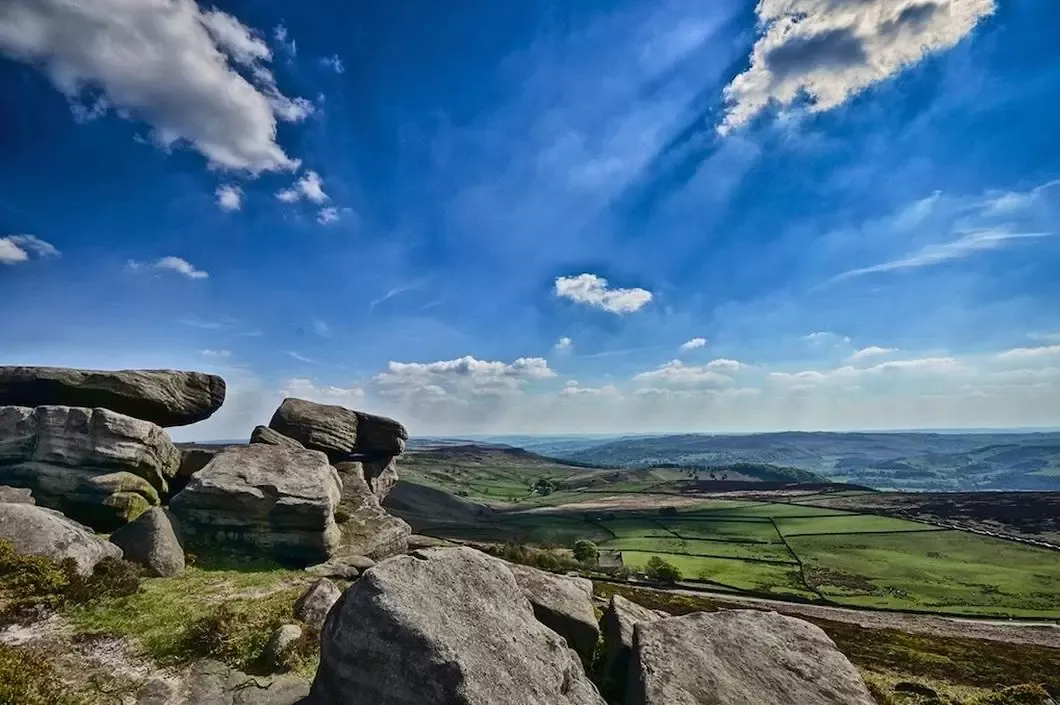The Peak District National Park is an upland area located in northern and central England. The protected area is mainly in northern Derbyshire. In addition, the park covers West and South Yorkshire, Staffordshire, Greater Manchester, Cheshire.
 |
| Peak District National Park |
The Peak District was formed in 1951. It became the first national park in the British Isles. Its territory includes two parts: southern and northern. The geological basis of the northern part is mainly made up of gravelstones or coarse-grained sandstones; it is occupied mainly by heather wastelands. The southern part is composed mostly of limestone.
The proximity to major cities (West and South Yorkshire, Staffordshire, Cheshire, Greater Manchester, Lancashire) and convenient rail and road connections have contributed to the increase in the popularity of the national park. Approximately 22 million people visit it annually.
Peak District National Park and its general information, climate and relief.
The frequency of visits to the Peak District National Park is the second in the world, second only to the Japanese Fuji-Hakone-Izu.
 |
| Peak District National Park |
Due to the fact that the protected area covers the southern spurs of the Pennine Mountains, its relief is characterized by many elevations - about 300 meters above sea level. The highest point on the Kinder Scout plateau is 636 meters. The local landscape is characterized by gentle slopes and hills. Important metropolitan areas such as Stoke-on-Trenta, Derby, Sheffield, Manchester, Huddersfield are located nearby. Peak District National Park
Landsin total are 1,437 km². To the north, the protected area is bounded by the A62 motorway between Melham and Marsden, northwest by Oldham, south by the Ashburn suburbs and the A52 motorway.
 |
| Peak District National Park |
The territorial boundaries of the national park do not include industrial and built-up areas, for example, the city of Buxton and the nearby quarries are located in a narrow "corridor" that surrounds the park's lands on three sides. However, many villages in the non-industrial west and the city of Bakewell fall within the Peak District.
The territory of the Peak District National Park is indented by river valleys; a considerable number of reservoirs were built here in the first half of the twentieth century in the upper reaches of the Derwent River, as well as its tributaries Nou and Wye, the Ladybower, Derwent and Howden reservoirs were created.
 |
| Peak District National Park |
Local reservoirs belong to the basins of various rivers: in the southern part - the Trenta River, northwestern - Mersey, northeastern - Don.
Peak District National Park and its flora
One of the most important values in the national park are fragments of moorlands and broadleaf forests on the high plateaus of the southern Pennines. The birch and oak groves within the boundaries of the park are pleasing to the eye, wastelands that alternate with it.
 |
| Peak District National Park |
The most diverse vegetation is observed on the slopes of the mountains - wild cherry, maple, yew, mountain elm, linden, ash, as well as a variety of flowering plants and field grasses. However, in general, natural forests cover only 4% of the entire protected area. Artificially planted woodlands are more significant in terms of area.
Peak District National Park and its wildlife
Many species of animals and birds have found their refuge in these landscapes. So, grouse, short-eared owl, merlin falcon, golden plover, warblers, warblers, meadow pipit, white-toothed thrush, pied flycatcher, great spotted and green woodpecker, woodcock live here.
Among other things of interest are limestone karst caves in the north of the national park. A significant number of bats have been recorded in caves. Small horseshoe bats and baleen moths are especially common.